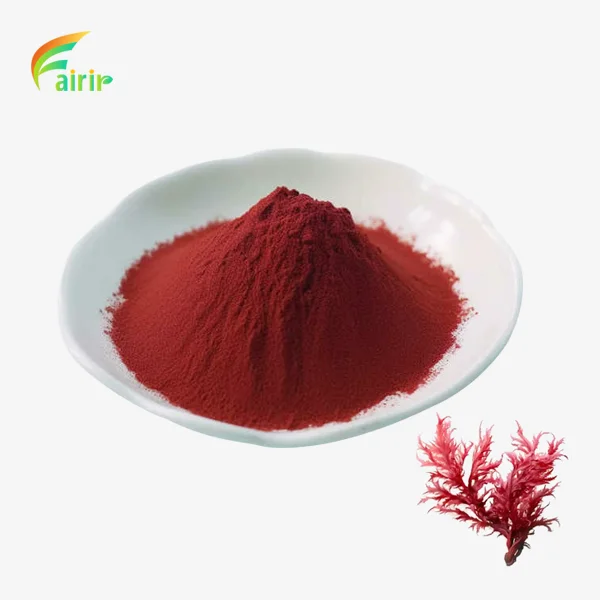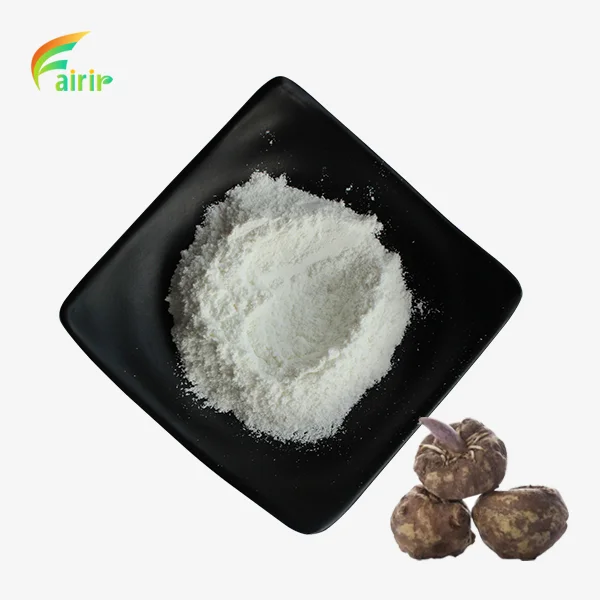L-Glutathione Reduced powder in skincare: benefits and formulations
L-Glutathione Reduced powder has emerged as a powerhouse ingredient in the skincare industry, revolutionizing the way we approach skin brightening, anti-aging, and overall skin health. This potent antioxidant, naturally produced by the body, has gained significant attention for its ability to combat oxidative stress, reduce melanin production, and promote a more even skin tone. As the demand for effective and safe skin-lightening solutions continues to grow, L-Glutathione Reduced powder has become a go-to ingredient for formulators and skincare enthusiasts alike. In this comprehensive guide, we'll explore the myriad benefits of L-Glutathione Reduced powder in skincare, delve into various formulation strategies, and discuss how this versatile ingredient can be incorporated into your skincare routine for optimal results. From topical applications to oral supplements, we'll examine the science behind L-Glutathione Reduced and its potential to transform your skin from the inside out.

Topical vs. Oral L-Glutathione Reduced: Comparative Effects on Skin Brightening and Even Tone
Topical Application: Efficacy and Absorption
L-Glutathione Reduced powder, when applied topically, has shown promising results in skin brightening and evening out skin tone. The efficacy of topical application largely depends on the formulation's ability to penetrate the skin barrier. Studies have demonstrated that L-Glutathione Reduced powder can effectively reduce melanin production when it reaches the deeper layers of the skin. To enhance absorption, formulators often use advanced delivery systems such as liposomes or nanoparticles. These technologies help protect the L-Glutathione Reduced powder from degradation and facilitate its penetration into the skin. When properly formulated, topical L-Glutathione Reduced can target specific areas of hyperpigmentation and provide localized brightening effects.
Oral Supplementation: Systemic Benefits
Oral supplementation of L-Glutathione Reduced powder offers a systemic approach to skin brightening and overall skin health. When ingested, L-Glutathione Reduced is absorbed into the bloodstream and distributed throughout the body, including the skin. This method can potentially provide more uniform brightening effects across all areas of the skin. Additionally, oral L-Glutathione Reduced supplementation may offer broader health benefits beyond skin brightening, such as supporting liver function and boosting the immune system. However, the bioavailability of oral L-Glutathione Reduced has been a subject of debate, with some studies suggesting that it may be partially broken down in the digestive system before reaching the bloodstream.
Comparative Analysis: Which Method is More Effective?
When comparing topical and oral applications of L-Glutathione Reduced powder, it's essential to consider individual skin concerns and desired outcomes. Topical application may be more effective for targeting specific areas of hyperpigmentation and achieving quicker visible results. On the other hand, oral supplementation may provide more comprehensive and long-lasting effects on overall skin tone and health. Some skincare experts recommend a combined approach, using both topical and oral L-Glutathione Reduced for optimal results. This synergistic method allows for both targeted and systemic benefits, potentially leading to more significant improvements in skin brightness and evenness.
Concentration and Vehicle Formulations: What % L-Glutathione Reduced Is Effective in Serums, Creams, and Masks?
Serums: High Concentration for Maximum Efficacy
Serums are typically formulated with higher concentrations of active ingredients, making them an ideal vehicle for L-Glutathione Reduced powder. In serums, L-Glutathione Reduced concentrations can range from 1% to 5%, with some advanced formulations pushing the boundaries up to 10%. The higher concentration in serums allows for more potent and targeted delivery of L-Glutathione Reduced to the skin. When formulating serums, it's crucial to consider the stability of L-Glutathione Reduced and incorporate appropriate preservatives and antioxidants to maintain its efficacy. Additionally, using a low pH formulation (around 3.5-4.5) can help enhance the stability and penetration of L-Glutathione Reduced powder in serum formulations.

Creams: Balanced Formulations for Daily Use
Creams offer a more balanced approach to L-Glutathione Reduced delivery, combining the active ingredient with moisturizing and nourishing components. In cream formulations, L-Glutathione Reduced concentrations typically range from 0.5% to 2%. This lower concentration is often sufficient for daily use and can provide gradual brightening effects over time. Creams also allow for the incorporation of complementary ingredients that can enhance the overall efficacy of L-Glutathione Reduced, such as vitamin C or niacinamide. When formulating creams with L-Glutathione Reduced powder, it's essential to consider the emulsion type (oil-in-water or water-in-oil) and ensure that the active ingredient is properly dispersed for even distribution and optimal absorption.
Masks: Intensive Treatments with Varying Concentrations
Masks offer a versatile platform for delivering L-Glutathione Reduced powder to the skin, with concentrations varying depending on the mask type and intended use. Sheet masks and hydrogel masks typically contain lower concentrations of L-Glutathione Reduced, ranging from 0.1% to 1%, as they are designed for frequent use. On the other hand, wash-off masks and overnight treatments can incorporate higher concentrations, up to 5%, for more intensive brightening effects. When formulating masks with L-Glutathione Reduced powder, it's important to consider the contact time with the skin and adjust the concentration accordingly. For longer-wear masks, a lower concentration may be sufficient, while shorter-duration treatments may benefit from higher concentrations to maximize the brightening effects.
Synergies with Other Actives: Combining L-Glutathione Reduced with Vitamin C, Niacinamide, and Anti-Oxidants for Anti-Aging
L-Glutathione Reduced and Vitamin C: A Powerful Brightening Duo
The combination of L-Glutathione Reduced powder and Vitamin C creates a potent synergy for skin brightening and anti-aging effects. Vitamin C, also known as ascorbic acid, is a well-established antioxidant that inhibits tyrosinase, an enzyme crucial in melanin production. When combined with L-Glutathione Reduced, Vitamin C enhances the overall brightening effect by targeting multiple pathways of melanin synthesis. Additionally, both ingredients offer powerful antioxidant protection, shielding the skin from free radical damage and supporting collagen production. Formulations containing both L-Glutathione Reduced and Vitamin C often demonstrate improved stability and efficacy compared to products containing either ingredient alone. When creating formulations with this combination, it's essential to consider the pH balance and use stabilized forms of Vitamin C to ensure maximum potency and shelf life.
Niacinamide and L-Glutathione Reduced: Enhancing Skin Barrier Function
Niacinamide, also known as Vitamin B3, complements L-Glutathione Reduced powder in skincare formulations by offering multiple benefits for skin health and appearance. While L-Glutathione Reduced primarily focuses on skin brightening and antioxidant protection, niacinamide excels in improving skin barrier function, reducing inflammation, and regulating sebum production. When combined, these ingredients create a comprehensive approach to skin brightening and anti-aging. Niacinamide can help enhance the penetration of L-Glutathione Reduced by improving skin barrier function, potentially leading to better absorption and efficacy. Furthermore, the anti-inflammatory properties of niacinamide can help mitigate any potential irritation that may occur with higher concentrations of L-Glutathione Reduced, making it an excellent addition to formulations for sensitive skin types.
Antioxidant Blends: Maximizing Protection and Anti-Aging Benefits
Combining L-Glutathione Reduced powder with a blend of antioxidants can significantly enhance its protective and anti-aging properties. Ingredients such as green tea extract, resveratrol, and coenzyme Q10 can work synergistically with L-Glutathione Reduced to provide comprehensive protection against various types of oxidative stress. These antioxidant blends not only support the skin's natural defense mechanisms but also target specific aspects of skin aging, such as collagen degradation and cellular damage. When formulating with multiple antioxidants, it's crucial to consider their stability and potential interactions. Some antioxidants may have different optimal pH ranges or may be sensitive to light or air exposure. Careful formulation and packaging can help ensure that all ingredients maintain their potency throughout the product's shelf life, delivering maximum benefits to the skin.
Conclusion
L-Glutathione Reduced powder has proven to be a versatile and effective ingredient in skincare, offering significant benefits for skin brightening, anti-aging, and overall skin health. Whether used topically or orally, in various concentrations across different product types, or combined with complementary actives, L-Glutathione Reduced demonstrates remarkable potential in addressing a wide range of skin concerns. As research continues to unveil new applications and formulation techniques, L-Glutathione Reduced is poised to remain a key player in the ever-evolving world of skincare innovation.
At Shaanxi Fairir Biotech Co., Ltd. we are committed to providing high-quality L-Glutathione Reduced powder and other plant extracts to meet the diverse needs of the skincare industry. Our state-of-the-art manufacturing facilities and rigorous quality control processes ensure that our products meet the highest standards of purity and efficacy. We invite skincare formulators, manufacturers, and brands to explore the potential of our L-Glutathione Reduced powder in their product development. For inquiries and collaboration opportunities, please contact us at sales@fairirbiotech.com.
FAQ
Q: Is L-Glutathione Reduced powder safe for all skin types?
A: Generally, L-Glutathione Reduced is considered safe for most skin types. However, as with any skincare ingredient, it's best to perform a patch test and consult with a dermatologist, especially if you have sensitive skin or known allergies.
Q: How long does it take to see results when using L-Glutathione Reduced in skincare?
A: Results can vary depending on the formulation, concentration, and individual skin factors. Generally, noticeable improvements in skin brightness and tone can be observed within 4-8 weeks of consistent use.
Q: Can L-Glutathione Reduced powder be used during pregnancy?
A: While L-Glutathione is naturally produced in the body, it's always best to consult with a healthcare provider before using any new skincare products or supplements during pregnancy.
Q: Are there any side effects associated with using L-Glutathione Reduced in skincare?
A: When used as directed, L-Glutathione Reduced is generally well-tolerated. However, some individuals may experience mild irritation or redness. If these symptoms persist, discontinue use and consult a dermatologist.
References
1. Sonthalia, S., Daulatabad, D., & Sarkar, R. (2016). Glutathione as a skin whitening agent: Facts, myths, evidence and controversies. Indian Journal of Dermatology, Venereology and Leprology, 82(3), 262-272.
2. Watanabe, F., Hashizume, E., Chan, G. P., & Kamimura, A. (2014). Skin-whitening and skin-condition-improving effects of topical oxidized glutathione: a double-blind and placebo-controlled clinical trial in healthy women. Clinical, Cosmetic and Investigational Dermatology, 7, 267-274.
3. Arjinpathana, N., & Asawanonda, P. (2012). Glutathione as an oral whitening agent: a randomized, double-blind, placebo-controlled study. Journal of Dermatological Treatment, 23(2), 97-102.
4. Sinigaglia, M., Montevecchi, M., & Todeschi, S. (2018). Stability and compatibility of L-glutathione in cosmetic formulations. Journal of Cosmetic Science, 69(3), 207-220.
5. Weschawalit, S., Thongthip, S., Phutrakul, P., & Asawanonda, P. (2017). Glutathione and its antiaging and antimelanogenic effects. Clinical, Cosmetic and Investigational Dermatology, 10, 147-153.
6. Kern, J. K., Geier, D. A., Adams, J. B., Garver, C. R., Audhya, T., & Geier, M. R. (2011). A clinical trial of glutathione supplementation in autism spectrum disorders. Medical Science Monitor, 17(12), CR677-CR682.











_1751965378790.webp)